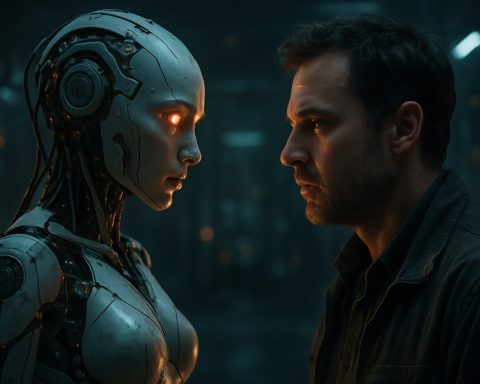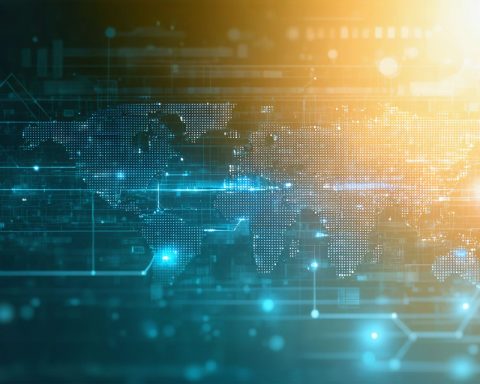- Dexterity has secured $95 million to advance its “Physical AI” technology, which transforms how robots interact with their environment.
- Robots developed under this framework are designed to tackle complex tasks with human-like adaptability, addressing labor shortages and increasing productivity.
- The investment is co-led by Lightspeed and Sumitomo Corp., emphasizing confidence in Dexterity’s vision for AI-powered robotics as a cornerstone for industrial efficiency.
- Dexterity’s solutions target logistics, warehousing, and supply chain sectors, offering innovative automation that adapts to dynamic needs.
- Competition in the robotics field includes Figure and Meta, advancing humanoid and household robots, respectively, with substantial funding.
- The future of robotics focuses on enhancing human capabilities, blending human creativity with machine efficiency for improved workplace harmony.
In an era where innovation shapes industries overnight, Dexterity stands as a herald of change with its phenomenal rise in the field of robotics and artificial intelligence. The company has recently captured attention by securing an impressive $95 million to further develop its groundbreaking “Physical AI” technology. But what exactly makes this approach so transformative?
Imagine robots not merely executing programmed tasks, but mastering the nuances of physical work with human-like dexterity. Dexterity’s mission goes beyond automation; it reimagines how robots interact with their environment, making them capable of tackling complex, unpredictable tasks—loading trucks, singulating parcels, and palletizing with an efficiency previously unseen. The robots engineered under this framework do not simply automate; they adapt and evolve, becoming indispensable allies in industries grappling with labor shortages and the relentless push for heightened productivity.
This latest investment, co-led by Lightspeed and Sumitomo Corp., underscores the continued trust and confidence in Dexterity’s vision. Lightspeed’s longstanding partnership with Dexterity, stretching back to the company’s seed round in 2017, highlights a shared belief in advancing AI-powered robotics as the linchpin of future industrial efficiency. This investment fuels Dexterity’s quest to implement automation solutions across logistics, warehousing, and supply chain operations—arenas desperately in need of innovation.
As industries prepare to embrace robotic colleagues, other major players are not idling by the wayside. Figure, another contender in the humanoid robotics scene, has hinted at raising a staggering $1.5 billion for its vision of humanoid robots in homes. Their Figure 02 prototype exemplifies the potential for robotics to permeate more intimate spaces.
Meanwhile, Meta has set its sights on AI-powered household robots, and Apptronik’s Apollo humanoid robot has garnered significant interest with its promise to revolutionize sectors like automotive and consumer goods with an infusion of $350 million in fresh funding.
The stakes are high as the future of AI-powered robotics is written. Dexterity, with its innovative Physical AI models, leads the charge, charting a course that seamlessly blends human and machine capabilities. The evolution of how tasks are accomplished—from repetitive drudgery to sophisticated, adaptive maneuvers—presents a compelling opportunity for industries worldwide.
The promise of robotics lies not in replacing human workers but in empowering them, allowing humans to focus on creativity and decision-making while machines handle the heavy lifting. Dexterity’s vision paints a portrait not just of efficiency, but of harmony in the workplace—a testament to the boundless possibilities that emerge when innovation meets determination.
Can Physical AI Revolutionize the Future of Robotics?
What is Dexterity’s Physical AI?
Dexterity’s “Physical AI” represents a significant leap in the realm of robotics, blending artificial intelligence with robotics to enable machines to perform complex tasks with human-like dexterity. Unlike traditional robots programmed for repetitive tasks, Dexterity’s robots can adapt to unfamiliar environments and handle unpredictable challenges—such as singulating parcels and palletizing—through advanced sensing and AI algorithms.
How Does Physical AI Work?
1. Adaptive Learning: Dexterity’s robots are equipped with sensors and AI algorithms that allow them to learn from and adapt to their environment in real-time. This includes adjusting to variations in size, shape, weight, and texture of objects they interact with.
2. Human-Like Dexterity: By mimicking the flexibility and precision of human movement, these robots can perform intricate tasks that traditionally require a level of finesse unsuited to older robotic systems.
3. Advanced Sensing and Perception: Equipped with state-of-the-art sensors, the robots can accurately perceive their surroundings, facilitating better decision-making and task execution.
Real-World Use Cases
– Logistics and Warehousing: Automated sorting and packing systems can greatly enhance efficiency and accuracy, handling more SKUs with fewer errors.
– Supply Chain Operations: Robots equipped with Physical AI can improve turnaround times by swiftly and accurately loading and unloading inventory, thus cutting costs and driving productivity.
– Manufacturing: Enhanced precision in tasks such as assembly and material handling leads to reduced human error and improved quality control.
Industry Trends and Predictions
– Rise of Collaborative Robots (Cobots): The trend of robots working alongside humans—supplementing human roles rather than replacing them—is expected to accelerate. These cobots will handle repetitive, hazardous tasks while humans focus on areas requiring complex decision-making.
– Automation in Diverse Sectors: Beyond logistics and manufacturing, we can expect significant growth in sectors such as healthcare, where robots could handle mundane or risky tasks, and retail, where inventory management could become more streamlined.
Pressing Questions
– What are the Limitations and Challenges? Current challenges include integrating these systems with existing infrastructure, ensuring security against cyber threats, and managing the costs associated with deployment and maintenance.
– Will Physical AI Take Jobs? While automation can lead to shifts in the job market, the intention behind Dexterity’s technology is to empower workers by taking over tedious tasks, allowing humans to engage in more creative and strategic roles.
Actionable Recommendations
– For Businesses: Embrace automation selectively by starting with pilot programs to assess the impact and suitability for your operations.
– For Employees: Consider upskilling in areas such as robotics management and AI to stay relevant in an evolving job market.
– For Investors: Keep an eye on companies like Dexterity as they continue to lead innovation in AI and automation, offering potential high returns.
Conclusion
The promise of Physical AI lies not just in operational efficiency but in the harmonious collaboration between humans and machines. As industries increasingly recognize the value of integrating AI-powered robotics, companies like Dexterity will be at the forefront, paving the way for a future where technological evolution translates into real-world benefits.
For more insights and updates on AI and robotics, visit Smithsonian Magazine and Fortune.







